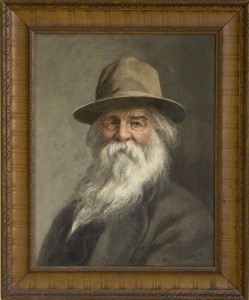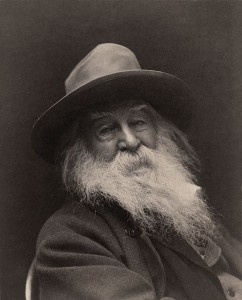One of the letters in Selected Correspondence of Charles Ives, edited by Tom C. Owens, is from the composer and educator Percy Goetschius, a composer and the head of the theory department at the Institute of Music and Art in New York (which later became Juilliard School of Music), acknowledging his receipt of Ives’ Concord Sonata.1 Ives’ music was not met with much acclaim during his lifetime, forcing him to adopt the rather unorthodox method of simply sending his music to anybody who might show interest, from friends to complete strangers in the musical establishment, as well as fans outside of it. Many recipients of his music were confused as to the nature and potential merits of Ives’ music, which was very unconventional, as well as why they were even receiving it at all.
Goetschius’ letter is typical of much of the correspondence that Ives received, and reveals the source of much of this confusion. He apologizes for having neglected to write earlier, but eagerly states that the piece “excited [his] deep interest”. He reassures Ives that he does not “wish to take [his] music lightly”, but confesses his dislike for it, as it does not align with the “classic methods”, which “to [his] mind[…]are correct ones” and speak to unchanging facts of physics. Goetschius even writes that he “[hesitates] to call it ‘music'”, choosing instead to refer to it as Ives’ “work” and describing his methods as “experiments”. However, Goetschius does reflect that he is biased towards the “habits[…]of the classic method”, which despite reflecting some fundamental truths in his opinion, are nevertheless to some extent “habits”. Declaring that he is not “a heartless and brainless conservative” who sees Beethoven (or Ives, or any other composer) as the end-all and be-all of art music, he ends by expressing his fervent hope that Ives’ “sincerity” and “logic” would lead to greater success in the future.
Ives’ music was highly experimental, and he deliberately abandoned many earlier traditions. Ives was already financially comfortable through his job in the insurance business, giving him the freedom to do essentially whatever he wanted musically.2 This made much of his music fantastically impractical, as he did not have to consider how it might actually be performed. Ives was part of the generation that Antonín Dvořák had declared needed to establish a truly American musical identity by drawing on spirituals and other American folk music, and many today regard him as the first composer to find success in this regard.3 Ives was one of the few white composers to include black folk music in his music as Dvořák had envisioned. His music drew on a wide variety of both white and black influences, from Protestant hymnody to spirituals and ragtime. He adapted these genres to his own idiosyncratic style and combined them to capture particular moments in the soundscape of America.4 The Concord Sonata, which Goetschius wrote his letter in response to, was an homage to the Transcendentalist philosophers of the mid-nineteenth century full of dissonance, cluster chords, and a brief flute solo.2 Ives self-consciously sought to distance his music from the music of composers who came before in an attempt to solve the “Beethoven problem” of having to establish an identity in relation to a supposedly universal but paradoxically German ideal.5 He would probably have been rather pleased, then, when Goetschius admitted that Ives’ “experiments” interested him as a rejection of the idea that Beethoven should be taken as the “Last Word” in art music.1
However, Ives reacted with frustration and defensiveness to those who did not understand his compositions, retorting rather petulantly in the margins that objective standards are “for soft-eared cissies and aural cowards!” In a different letter that Ives wrote to Henry F. Gilbert, a fellow New Englander and composer who appreciated Ives’ music, this defensiveness shines through again when he protests that he is “not a bad composer[…]though it’s inconvenient to have no one know that but [himself]!”6 This reveals the almost total lack of support he found, as well as the obstinacy with which he refused to change his methods. Although Ives found some admirers during his lifetime and achieved greater success after his death, his refusal to adhere to the objective standards set by European classical music and determination to create experimental music were reflected in the confusion, distaste, and apathy he faced in audiences who simply did not understand what he was going for. However, Ives’ total abandonment of convention in favor of experimentation and his utilization of American folk music, both black and white, ultimately helped him establish a distinctively American style.
References:
1 Goetschius, Percy. Letter to Charles Ives. Selected Correspondence of Charles Ives, 67-8. Oakland, CA: University of California Press, May 20, 2007.
2 Tomes, Susan. The Piano : A History in 100 Pieces. New Haven: Yale University Press, 2021. Accessed November 13, 2022. ProQuest Ebook Central.
3Mauk, David C. “New England Transcendentalism Versus Virulent Nationalism: The Evolution of Charles Ives’ Patriotic March Music.” American Studies in Scandinavia 31, no. 1 (1999): 24–33. https://doi.org/10.22439/asca.v31i1.1478.
4 Garrett, Charles Hiroshi. “Charles Ivesʹs Four Ragtime Dances and ʺTrue American Musicʺ.” In Struggling to Define a Nation: American Music and the Twentieth Century, 1st ed., 17–47. University of California Press, 2008. http://www.jstor.org/stable/10.1525/j.ctt1pp004.6.
5 Shadle, Douglas W. Essay. In Orchestrating the Nation: The Nineteenth-Century American Symphonic Enterprise, 242–57. Oxford University Press, 2018.
6 Ives, Charles. Letter to Henry F. Gilbert. Selected Correspondence of Charles Ives, 82-3. Oakland, CA: University of California Press, May 20, 2007.


